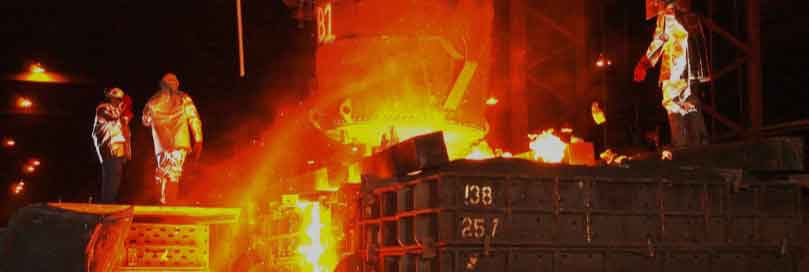In recent years, the sand casting industry has witnessed several innovations that have driven significant growth and advancements in the sector. These innovations aim to enhance efficiency, precision, and sustainability in the sand casting process. Here are some notable innovations:

- 3D Printing in Sand Molds: Additive manufacturing technologies, specifically 3D printing, have made a significant impact on sand casting. Using 3D-printed sand molds and cores allows for more complex and intricate designs that were previously challenging or impossible to achieve with traditional methods. This technology reduces lead times and costs for producing custom molds.
- Simulation Software: Advanced simulation software is now widely used in sand casting services. It enables engineers to virtually simulate the casting process, predict potential defects, and optimize mold designs and gating systems before actual production. This helps reduce the number of trial castings required and ensures higher first-pass yields.
- Automated Sand Handling Systems: Automated sand handling systems have improved the efficiency and consistency of sand preparation and molding processes. These systems automate the mixing, conditioning, and delivery of sand to the molding machines, leading to faster production and reduced labor costs.
- Robotics and Automation: The integration of robotics and automation in sand casting services has led to increased productivity and reduced human intervention. Robots can handle tasks such as pouring molten metal, removing finished castings, and performing non-destructive testing, resulting in improved safety and efficiency.
- Real-Time Monitoring and Quality Control: Sand casting services have adopted real-time monitoring systems to collect and analyze data during the casting process. This allows for immediate detection of deviations or defects, enabling timely corrective actions and ensuring consistent quality.
- Green Sand Reclamation: Sustainable practices are gaining prominence in the industry. Green sand reclamation technologies help recycle and reuse the sand used in casting, reducing waste and lowering overall environmental impact.
- Low-Pressure Casting: Low-pressure sand casting is an advancement that minimizes defects and improves the quality of the castings. The low-pressure approach results in better filling of the mold and reduces the risk of porosity and other defects.
- Metal Additive Manufacturing Integration: Some sand casting services have integrated metal additive manufacturing (AM) with the sand casting process. By combining these techniques, manufacturers can create hybrid components that take advantage of the benefits of both AM and traditional casting methods.
- Digital Twin and Data Analytics: The concept of a digital twin, where a virtual replica of the casting process is created, allows for real-time monitoring and optimization. Data analytics help identify patterns and correlations to optimize process parameters and casting quality.
- Lean Manufacturing Practices: Adopting lean manufacturing principles has improved overall efficiency in sand casting services. Streamlining processes, reducing waste, and optimizing workflows lead to cost savings and increased competitiveness.
These innovations have collectively transformed the sand casting industry, making it more adaptable, efficient, and capable of producing high-quality castings for various applications. As the industry continues to evolve, further advancements in technology and sustainable practices are expected to drive continued growth and success.
